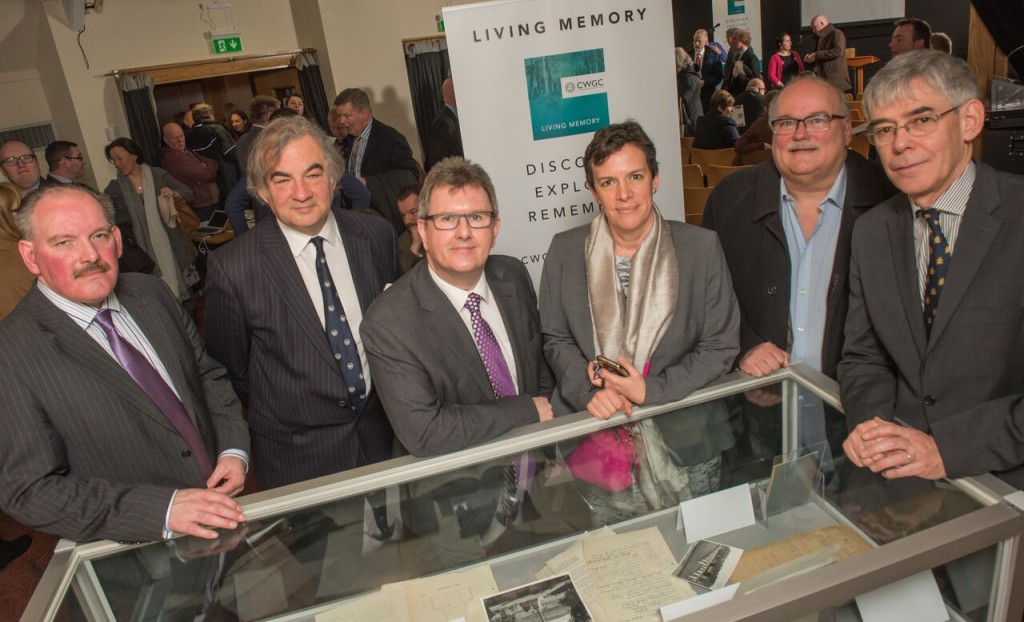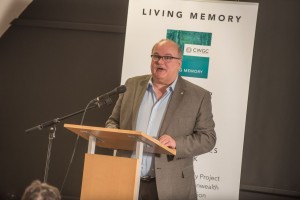The Commonwealth War Graves Commission (CWGC), supported by the World War One Centenary Committee in Northern Ireland, have announced details of Living Memory – a project to highlight and engage communities in Northern Ireland with the 2,700 war graves of the two world wars to be found there in 400 cemeteries and burial grounds.
The Living Memory Project is designed to raise awareness of the 300,000 war graves and commemorations in the UK.

In 2016, the CWGC, in partnership with Big Ideas Company, are asking the public to re-connect with the war dead buried in their own communities. CWGC wants the public to visit these sites, take a personal interest in those buried there, organise a commemoration of their own and ultimately, champion these places – tell their friends or other local community groups that these war graves must not be forgotten.
Funding and a creative resource pack will be available from March 2016 for community groups in Northern Ireland wishing to participate in this initiative.
The Rt Hon Jeffrey Donaldson MP is supporting the project and said: “As chairman of the Northern Ireland World War One Centenary Committee, I am delighted to be co-hosting this event at the Linen Hall Library to highlight the fact we have a significant number of war graves here in Northern Ireland, including many associated with those who died during the First World War. The CWGC has undertaken excellent work to preserve and maintain these graves and I believe it’s important to increase awareness of the graves and to encourage local people to visit during the current centenary period. The fact is that you don’t have to travel to France or Belgium to visit a WW1 war grave. There may be one in your local cemetery.”
Mr Colin Kerr, CWGC Director of External Relations, explained: “Living Memory is about discovering, exploring and remembering those war graves to be found in cemeteries, churchyards and burial grounds here at home.
 “When people hear about the First World War, they think of the large, set-piece battles on the Western Front, and the cemeteries and memorials there that the CWGC maintains. But there are war graves and memorials literally on your doorstep – many lie in forgotten corners of graveyards. The CWGCs Living Memory initiative aids their rediscovery and remembrance.
“When people hear about the First World War, they think of the large, set-piece battles on the Western Front, and the cemeteries and memorials there that the CWGC maintains. But there are war graves and memorials literally on your doorstep – many lie in forgotten corners of graveyards. The CWGCs Living Memory initiative aids their rediscovery and remembrance.
“Living Memory presents a unique opportunity for communities to work together to gain a fuller understanding of the war’s impact and the ongoing importance of remembrance.”
Big Ideas Chief Executive, Virginia Crompton, said: “When you stand at the graveside of someone who lost their life in war some of the politics of the past fall away. The headstone brings you back to the individual, and their family. It’s a powerful reminder of the impact of war. The Living Memory project is an opportunity for us all to make a very simple and human gesture in remembering those who died in the two world wars and are buried near us. We are proud to be working with the CWGC to invite communities to take part.”
Mr Ken Best was one of those who took part in a pilot of the Living Memory Project in November 2015. He said: “The opportunity to participate in the CWGC Living Memory Pilot was enthusiastically embraced by The Grammarians, the Association of Old Boys of Bangor Grammar School. The School has a long tradition of remembering the former pupils who served and died in both world wars. The Guided Walk to Bangor Cemetery in November 2015, to pay our respects at some of the war graves opened up a new dimension to remembering those who paid the ultimate sacrifice as well as bringing the knowledge about these graves in the town to the wider community.”
To support the initiative, the CWGC is bringing a number of its unique archive documents to Northern Ireland for the very first time. The documents include details of how the CWGC commemorated a female typist, Sarah Hale, who died in the sinking of the SS Lusitania in 1915 and correspondence between CWGC Founder Fabian Ware and Belfast City Hall over the care of war graves.
